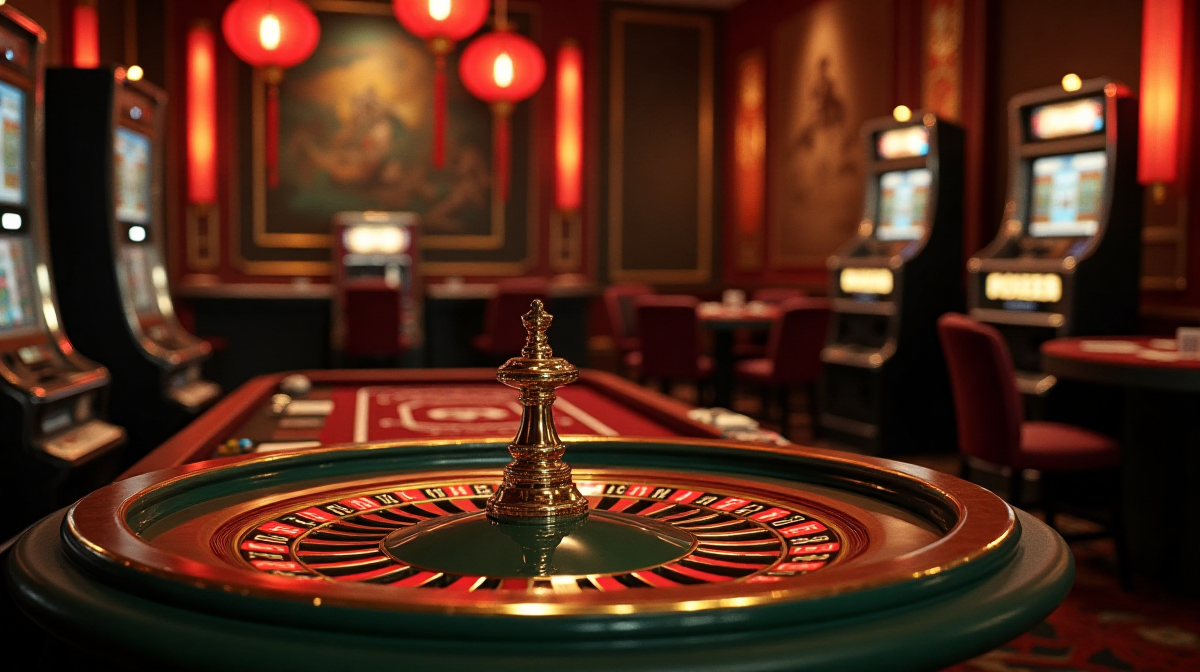Crouching Tiger, Hidden Dragon: A Film Guide
Brief Overview of the Film & Its Impact
Ang Lee’s Crouching Tiger, Hidden Dragon (2000) is a landmark achievement in cinema, transcending the boundaries of the wuxia genre to achieve international acclaim. The film captivated audiences with its breathtaking visuals, intricate fight choreography, and emotionally resonant story. It introduced many Western viewers to the beauty and complexity of Chinese martial arts films, leaving an indelible mark on action cinema. For those looking to access related online entertainment, platforms like raja567.com login often feature discussions and communities dedicated to films like this, alongside other forms of entertainment.
Understanding the Wuxia Genre - History & Conventions
Wuxia (武侠) translates to “martial heroes” and is a genre of Chinese fiction and film revolving around the adventures of martial artists in a romanticized historical setting. Rooted in Chinese folklore and philosophy, wuxia stories typically involve themes of honor, loyalty, revenge, and the pursuit of justice. Conventional elements include gravity-defying fight sequences, complex moral codes, and a strong emphasis on personal cultivation and spiritual discipline.
Ang Lee’s Directorial Style & Significance
Ang Lee brought a unique sensitivity and artistic vision to the wuxia genre. Known for his character-driven narratives and nuanced portrayals of human relationships, Lee infused Crouching Tiger, Hidden Dragon with emotional depth and psychological realism, elevating it beyond a simple action spectacle. His masterful direction skillfully blended traditional wuxia conventions with contemporary cinematic techniques.
Plot Synopsis & Key Narrative Threads
The Stolen Green Destiny Sword – The Central MacGuffin
The film’s narrative is initiated by the theft of the Green Destiny sword, a legendary weapon with a rich history and significant symbolic weight. This stolen artifact serves as the catalyst for the unfolding events, drawing the characters into a web of intrigue, conflict, and unrequited desires.
Yu Shu Lien’s Dilemma – Duty, Love, & Tradition
Yu Shu Lien, a renowned warrior, is tasked with recovering the Green Destiny. Her mission is complicated by her long-suppressed feelings for Li Mu Bai, a master swordsman, and the societal constraints placed upon women during the Qing Dynasty.
Li Mu Bai’s Search for Peace & Succession
Li Mu Bai, weary of a life of violence, seeks to retire and entrust the Green Destiny to a worthy successor. His journey is not merely about finding a skilled fighter, but someone who understands the true meaning of peace and possesses the moral character to wield such power responsibly.
Jen Yu’s Rebellion – Breaking Societal Norms
Jen Yu, the daughter of a provincial governor, embodies a spirit of rebellion against the rigid social norms of her time. She secretly desires a life of freedom and adventure, mastering martial arts skills in defiance of expectations.
The Desert Bandit – The Jade Fox & Her Crew
The Jade Fox, a notorious desert bandit, and her crew pose a formidable threat to the protagonists. Driven by greed and ambition, they represent the darker side of the martial world and add another layer of complexity to the narrative. For those interested in predicting outcomes in competitive scenarios, even outside of film, resources offering dragon vs tiger prediction strategies can be found online.

Major Characters: A Deep Dive
Yu Shu Lien – Loyalty, Restraint, & Unrequited Love
Character Arc and Motivations
Yu Shu Lien is the moral center of the film, representing duty, loyalty, and the acceptance of societal constraints. Her internal conflict stems from her unrequited love for Li Mu Bai and her struggle to reconcile her desires with her obligations.
Michelle Yeoh’s Performance & Significance
Michelle Yeoh delivers a captivating performance as Yu Shu Lien, embodying both strength and vulnerability. Her portrayal is celebrated for its nuance and emotional depth, establishing her as a leading figure in action cinema.
Li Mu Bai – The Master Swordsman & His Inner Conflict
Symbolism of his Retirement & Seeking a Successor
Li Mu Bai's decision to retire symbolizes a rejection of violence and a yearning for inner peace. His search for a successor reflects his desire to leave a legacy of honor and responsibility.
Chow Yun-Fat's portrayal of stoicism & wisdom
Chow Yun-Fat embodies Li Mu Bai with a quiet dignity and understated strength. His performance conveys a sense of wisdom, inner turmoil, and a deep understanding of the complexities of life.
Jen Yu – Defiance, Skill, & Identity
Exploring Jen’s Motivation – Freedom vs. Expectations
Jen Yu's motivations are driven by a desire for freedom and self-determination. She rebels against the restrictive expectations placed upon her as a woman in Qing Dynasty China, seeking to forge her own destiny.
Zhang Ziyi’s breakout performance & impact on action cinema
Zhang Ziyi's portrayal of Jen Yu launched her into international stardom. Her dynamic performance, showcasing both fierce martial arts skills and emotional vulnerability, revolutionized the portrayal of female characters in action films. Discussing film and entertainment is common on platforms like Raja567 where users share their opinions.
The Jade Fox – A Ruthless & Formidable Antagonist
Understanding her backstory & motivations.
The Jade Fox, though presented as a villain, possesses a complex backstory rooted in betrayal and loss. Her ruthless ambition stems from a desire for power and recognition, fueled by a past injustice.

Themes & Symbolism
Honour, Duty, & Societal Expectations
The film deeply explores the Confucian values of honor, duty, and social harmony. Characters are constantly grappling with their obligations to family, society, and their own moral codes.
Love & Desire – Forbidden Relationships & Restraint
Crouching Tiger, Hidden Dragon portrays the complexities of love and desire within the constraints of societal norms. The unrequited love between Yu Shu Lien and Li Mu Bai and Jen Yu’s forbidden passions highlight the challenges of navigating emotional needs in a rigid social context.
The Conflict Between Tradition & Modernity
The film subtly reflects the tensions between tradition and modernity in Qing Dynasty China. Jen Yu’s rebellious spirit and desire for freedom represent a challenge to the established order.
Freedom & Rebellion – Challenging Gender Roles
Jen Yu’s character embodies the struggle for female empowerment and challenges the traditional gender roles prevalent in Chinese society.
The Symbolic Significance of the Green Destiny Sword
Power, Lineage, and the Weight of History
The Green Destiny sword symbolizes power, lineage, and the weight of history. It represents not only martial prowess but also the responsibility that comes with wielding such power.
Cinematic Techniques & Style
Visual Storytelling: Composition & Colour Palette
Ang Lee and cinematographer Peter Pau employ a stunning visual style, utilizing carefully composed shots, vibrant colors, and evocative imagery to enhance the narrative.
Choreography & Action Sequences – Wirework & Martial Arts
Influence of Hong Kong Action Cinema
The film’s action sequences are inspired by the traditions of Hong Kong action cinema, particularly the work of choreographer Yuen Woo-ping.
The Aesthetics of ‘Floating’ Combat
The use of wirework allows for gravity-defying fight sequences, creating a unique aesthetic of ‘floating’ combat that has become a hallmark of the wuxia genre. Many enjoy engaging in similar simulated excitement, and resources like raja567 casino login provide platforms for online games.
Music & Sound Design – Evoking Atmosphere & Emotion
Tan Dun's Oscar-winning Score - Composition & Impact
Tan Dun’s Oscar-winning score is integral to the film’s emotional impact, seamlessly blending traditional Chinese instruments with orchestral arrangements to create a haunting and evocative soundscape.
Cultural Context & Influences
Historical Setting & Dynastic China
The film is set during the Qing Dynasty, a period of significant social and political change in Chinese history. The historical context informs the characters’ motivations and the themes explored in the narrative.
Taoist & Buddhist Philosophies in the Narrative
Taoist and Buddhist philosophies permeate the film’s narrative, influencing the characters’ values and their pursuit of enlightenment.
Chinese Mythology & Folklore – Subtle References
The film incorporates subtle references to Chinese mythology and folklore, adding depth and resonance to the story.
Reception & Legacy
Critical Acclaim & Awards
Crouching Tiger, Hidden Dragon received widespread critical acclaim and won numerous awards, including four Academy Awards.
Box Office Success & Global Impact
The film was a commercial success, grossing over ⚠formula incomplete
Influence on Subsequent Action & Wuxia Films
The film’s success paved the way for a surge of interest in wuxia films and influenced subsequent action films, inspiring filmmakers to incorporate similar visual styles and thematic elements.
Crouching Tiger, Hidden Dragon’s Place in Film History
Crouching Tiger, Hidden Dragon is widely regarded as a masterpiece of world cinema and a landmark achievement in the wuxia genre. The film, like the allure of a good game, continues to attract attention – people often search for Raja567 related content alongside discussions of the movie.
Further Exploration
Recommended Reading
Several books and articles offer deeper insights into the wuxia genre, its history, and its cultural context.
Similar Films to Explore
Other notable wuxia films to explore include A Touch of Zen, Hero, and House of Flying Daggers.
Resources for Further Research
Numerous websites and documentaries provide valuable resources for further research on Chinese cinema and the wuxia genre.


